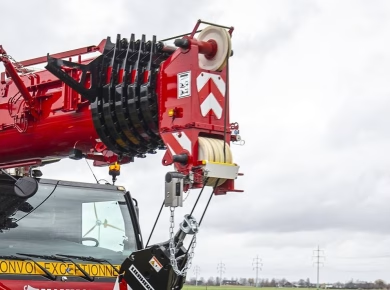The sight of an eyewash station tucked away in a corner of a construction site often goes unnoticed, much like a fire extinguisher that everyone hopes they’ll never have to use. Yet, these stations play a critical role in emergency preparedness, serving as the first line of defense against workplace eye injuries. Having spent years navigating the complexities of safety compliance, I’ve seen firsthand how the failure to properly install, maintain, and even test these emergency systems can lead to dire consequences. It’s time we shift our perspective on eyewash stations from mere regulatory requirements to essential safety tools that require our attention and proactive management.
The Importance of Eyewash Stations
Eyewash stations are not just a box to tick on safety checklists; they are lifesaving devices designed to flush contaminants from the eyes effectively. The statistics surrounding eye injuries in the workplace are staggering, with the American Academy of Ophthalmology reporting that about 2,000 eye injuries occur each day in the United States alone. Many of these incidents happen in high-risk environments like construction sites, laboratories, and manufacturing facilities. Understanding the importance of proper eyewash station installation and maintenance can quite literally make the difference between a minor inconvenience and a life-altering injury.
Understanding OSHA Regulations
The Occupational Safety and Health Administration (OSHA) has clear standards regarding eyewash stations, emphasizing that they must be accessible, properly maintained, and regularly tested. When I conduct site audits, I often find eyewash stations that are poorly positioned or, worse, not functioning at all. Compliance isn’t just about meeting regulations; it’s about creating a safe work environment. Ensure that your eyewash stations are placed within a 10-second walk from potential hazards and are unobstructed. Regular checks should include ensuring that the water runs clear and that the flushing mechanism works smoothly.
Common Oversights in Maintenance
It’s easy to overlook eyewash stations during routine safety checks, especially when other equipment demands immediate attention. One common oversight is neglecting the water supply. Eyewash stations should have a continuous supply of clean, tepid water. I’ve seen facilities where the water becomes stagnant, leading to bacterial growth that can cause more harm than good when someone desperately needs to flush their eyes. Regular maintenance schedules should include checking the water temperature, replacing any expired components, and flushing the system monthly to ensure it’s ready when needed.
Training Employees on Use
Another critical aspect of eyewash stations involves training employees on their proper use. I’ve been on sites where workers are aware of the eyewash station’s existence but have never received training on how to use it effectively. Conducting regular training sessions can demystify the process, ensuring that everyone knows how to react in an emergency. Role-playing scenarios where someone simulates an eye injury can help employees feel more comfortable and confident in using the equipment.
Real-World Challenges
Despite best efforts, challenges will arise. For example, during a recent project, a worker suffered a chemical splash to the eye. The nearest eyewash station was blocked by equipment, leading to a frantic search for an alternative solution. This incident reinforced the importance of not only having eyewash stations but also ensuring they are easily accessible at all times. Conducting regular site walkthroughs can help identify potential obstructions and allow for real-time adjustments.
Testing Procedures
Testing eyewash stations is a crucial, yet often neglected, component of maintenance. I recommend implementing a testing procedure that includes daily visual inspections and monthly functional tests. During these tests, run the station for a full 15 minutes to ensure that it can adequately flush the eyes. Document these tests meticulously; not only is this a best practice, but it also serves as evidence of compliance during safety audits.
Leveraging Technology for Compliance
In our increasingly tech-driven world, there are tools available that can streamline the maintenance and testing of eyewash stations. Some facilities are adopting smart technology that alerts management when a station requires maintenance or fails a routine test. This proactive approach can help ensure compliance and foster a culture of safety. Furthermore, digital training modules can supplement in-person training, allowing workers to refresh their knowledge at any time.
Creating a Culture of Safety
Ultimately, the goal should be to cultivate a culture of safety where eyewash stations are valued as a critical component of workplace health. This involves more than just compliance; it means fostering an environment where safety is a shared responsibility. Encourage open communication about safety concerns, and empower workers to report issues with eyewash stations without fear of reprisal. Recognizing that everyone plays a role in safety can make a significant difference in how equipment is treated.
As we wrap up, remember that eyewash stations are more than just equipment; they are a vital part of your emergency preparedness plan. Regular maintenance, employee training, and an unwavering commitment to safety can transform these overlooked tools into reliable allies in the face of workplace hazards. By prioritizing eyewash stations and their functionality, we ensure that our colleagues return home safe, and that we foster a culture of safety that is second to none. Let’s make it a point to not only install these stations but also to test and maintain them, creating a safer work environment for everyone involved.



